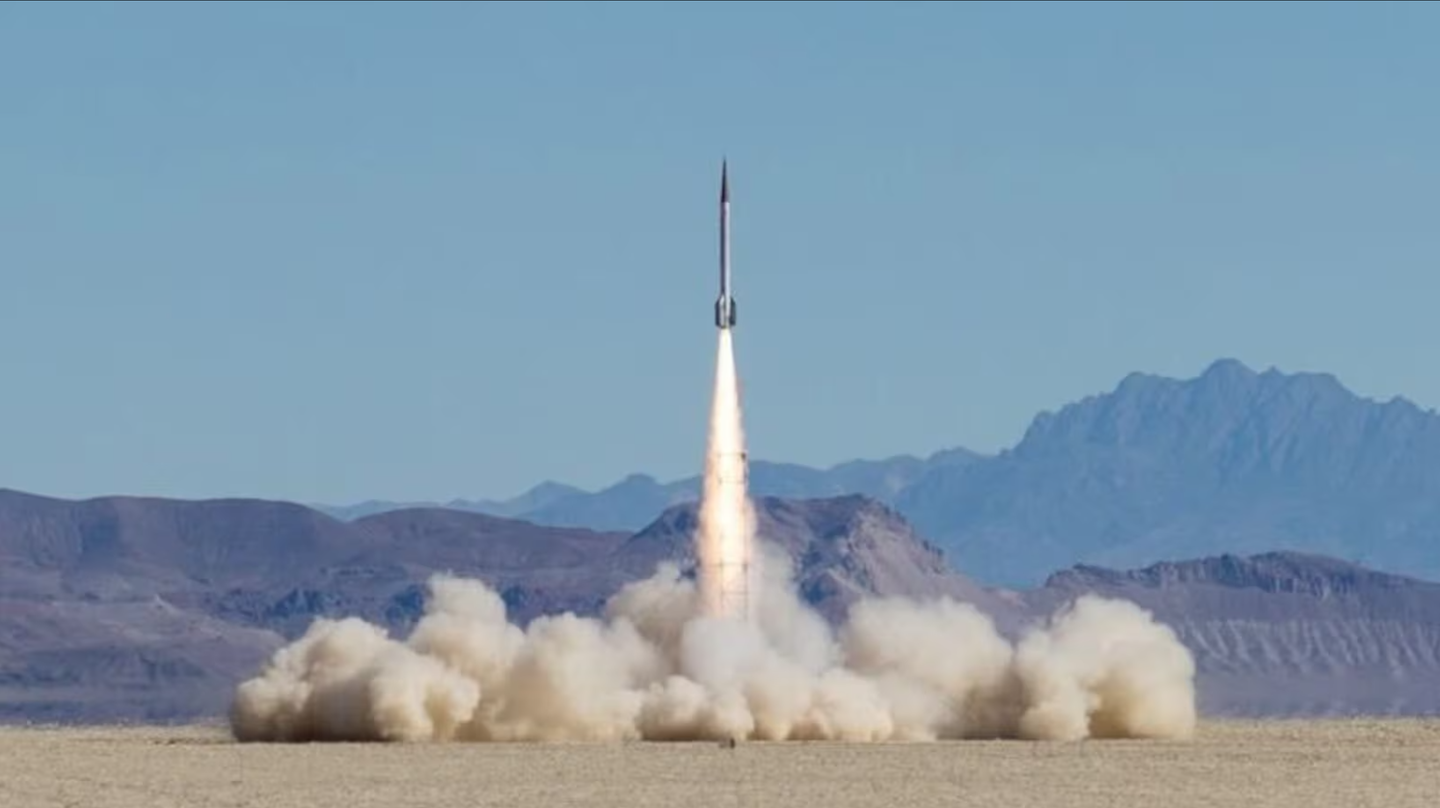Student-built rocket soars 470,000 feet, setting new benchmark in amateur space exploration
A student-built rocket by USC breaks the amateur altitude record, soaring to over 470,000 feet. Discover the innovations behind Aftershock II.

A USC student-built rocket has shattered records, soaring to over 470,000 feet. (CREDIT: USC)
A groundbreaking achievement in aerospace engineering has been reached, thanks to the efforts of a dedicated team of students.
Aftershock II, a rocket designed and built by the University of Southern California’s Rocket Propulsion Lab (USCRPL), has shattered records by reaching an altitude of over 470,000 feet. This makes it the highest-flying rocket ever created by a non-governmental and non-commercial group, surpassing a 20-year-old altitude benchmark.
The previous record, set in 2004 by the Civilian Space Exploration Team, stood at 380,000 feet. Aftershock II not only exceeded this by 90,000 feet but also advanced the engineering frontier for student-led initiatives.
This latest launch builds upon the USCRPL’s 2019 milestone, when their Traveler IV rocket became the first student-built rocket to cross the Kármán line—the threshold separating Earth’s atmosphere from outer space.
Engineering Excellence Redefined
The success of Aftershock II is attributed to several technical innovations. Standing 13 feet tall and weighing just 330 pounds, the rocket was equipped with advanced systems that optimized both its performance and resilience.
It reached hypersonic speeds of 5,283 feet per second, or Mach 5.5, aided by a sophisticated avionics system. This system ensured live data integration, improved flight safety, and streamlined the recovery process.
A critical aspect of the rocket’s endurance was its thermal protection system. New heat-resistant paint and titanium-coated fins shielded it from the intense heat and pressure generated at hypersonic speeds. These enhancements not only ensured the rocket's structural integrity during ascent but also facilitated its recovery after descent.
Related Stories
As Ryan Kraemer, USCRPL’s executive engineer, noted, “Thermal protection at hypersonic speeds is a major challenge at the industry level, and the protective paint system that we developed performed perfectly, enabling the rocket to return largely intact.”
The titanium fins also demonstrated their efficacy by undergoing anodization, turning blue from the intense heat—a visible testament to the extreme conditions the rocket endured.
Innovation and Determination
USCRPL’s achievement reflects a relentless pursuit of excellence over two decades. The student-run team has consistently pushed the boundaries of amateur rocketry, combining innovation with meticulous planning.
Kraemer highlighted the significance of their custom-built propulsion system, stating, “Aftershock II is distinguished by the most powerful solid-propellant motor ever fired by students and the most powerful composite case motor made by amateurs.”
Their journey to this milestone was not without challenges. To surpass their previous record, the team undertook a complete redesign of the Traveler IV rocket. They integrated custom computer systems and circuit boards, enabling real-time tracking and data collection during the flight. This data was crucial for analyzing the rocket’s performance and preparing for future projects.
The launch itself took place on October 20 at the Black Rock Desert in Nevada. The data, verified through rigorous analysis, was released in a white paper on November 14. This validation underscores the professionalism of the team, whose work rivals that of industry experts.
A Legacy of Excellence
The achievements of USCRPL extend beyond records and accolades. According to Dan Erwin, chair of the USC Department of Astronautical Engineering, the team embodies a culture of innovation and problem-solving that prepares students for leadership roles in the space industry.
“This is an exceptionally ambitious project not only for a student team, but for any non-professional group of rocket engineers,” Erwin remarked. Alumni from the lab have gone on to found startups such as Relativity Space and Ursa Major, contributing to advancements in commercial space exploration.
USC Viterbi School of Engineering’s Dean Yannis Yortsos emphasized the lab’s impact on fostering creativity and technical expertise among undergraduates. “This extraordinary group of students shows how to imagine, what can be done in the lab, and how to make it a reality. And throughout the 20-year history, how to translate their skills and knowledge to innovative startups,” Yortsos stated.
Bridging Education and Industry
The success of Aftershock II is not just a victory for USCRPL but a testament to the potential of academic institutions to drive technological innovation. By developing cutting-edge propulsion systems, avionics, and thermal protection technologies, the students have demonstrated their ability to tackle challenges faced by the broader aerospace industry.
Their accomplishment also highlights the growing role of amateur and academic groups in space exploration. By achieving what was once the domain of well-funded government agencies and commercial enterprises, USCRPL has paved the way for more inclusive participation in the space sector.
The recovery of Aftershock II after its record-breaking flight allows the team to analyze its performance and glean insights for future projects. This iterative approach ensures that the knowledge gained from this mission will inform the next generation of rockets, further advancing the capabilities of student-led initiatives.
As space exploration continues to capture global attention, achievements like this highlight the importance of fostering innovation at the grassroots level. For USCRPL, the sky is no longer the limit—it’s just the beginning.
Note: Materials provided above by The Brighter Side of News. Content may be edited for style and length.
Like these kind of feel good stories? Get The Brighter Side of News' newsletter.
Joseph Shavit
Head Science News Writer | Communicating Innovation & Discovery
Based in Los Angeles, Joseph Shavit is an accomplished science journalist, head science news writer and co-founder at The Brighter Side of News, where he translates cutting-edge discoveries into compelling stories for a broad audience. With a strong background spanning science, business, product management, media leadership, and entrepreneurship, Joseph brings a unique perspective to science communication. His expertise allows him to uncover the intersection of technological advancements and market potential, shedding light on how groundbreaking research evolves into transformative products and industries.



